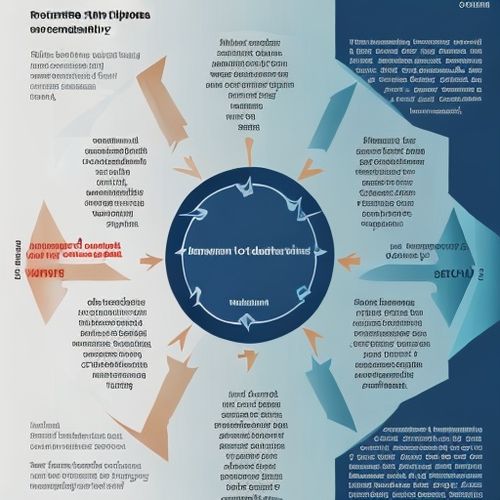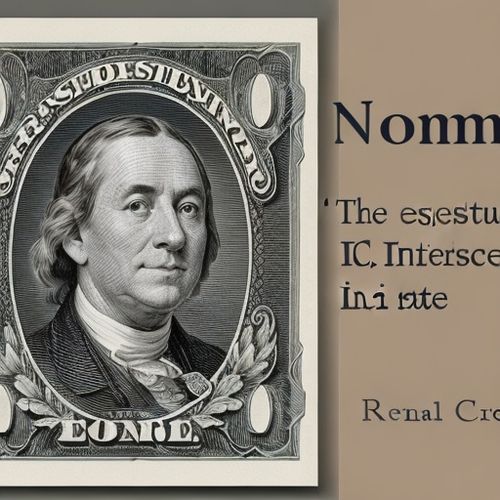The delicate dance between debt and equity financing has long captivated corporate strategists and financial theorists alike. At its core lies a fundamental question that keeps CFOs awake at night: how should companies strike the optimal balance between these two competing forces of capital structure? This isn't merely an academic exercise - the decisions made in boardrooms about financing mix ripple through organizations, affecting everything from shareholder returns to employee job security.
Modern capital structure theory traces its roots to the groundbreaking work of Modigliani and Miller in the 1950s, whose propositions shattered conventional wisdom about corporate finance. Their famous irrelevance theorem suggested that, under perfect market conditions, the value of a firm remains unaffected by its capital structure. Yet the real world operates far from these idealized conditions, creating fascinating complexities that continue to evolve with each market cycle.
The tax shield advantage of debt financing remains one of the most compelling arguments for leveraging balance sheets. Interest payments reduce taxable income, effectively creating a government subsidy for borrowing. This benefit grows more pronounced in high-tax jurisdictions, where every dollar of interest expense can save companies significant amounts in corporate taxes. However, this advantage comes with strings attached - excessive debt transforms from a strategic tool into a potential noose during economic downturns.
Equity financing tells a different story, one of shared ownership and aligned incentives. Unlike debt's fixed obligations, equity represents permanent capital that doesn't require repayment. This flexibility proves invaluable during turbulent periods when cash flows become unpredictable. Yet dilution concerns and the higher cost of equity capital give many executives pause, particularly in growth phases where control and future financing options must be carefully preserved.
Industry characteristics play a decisive role in determining appropriate capital structures. Capital-intensive sectors like utilities or telecommunications typically carry higher debt loads, leveraging predictable cash flows to service obligations. Meanwhile, technology startups and research-driven firms often rely almost exclusively on equity during their formative years, only introducing debt later when revenue streams stabilize. These sectoral patterns reveal how business models shape financial architecture.
The macroeconomic environment acts as an invisible hand guiding capital structure decisions. Periods of low interest rates create debt financing bonanzas, as seen in the post-2008 era when corporations rushed to lock in cheap borrowing costs. Conversely, rising rate environments test the resilience of highly leveraged firms, often triggering waves of restructuring. Astute financial managers develop contingency plans for multiple interest rate scenarios rather than optimizing for current conditions alone.
Credit ratings occupy a peculiar space in this balancing act, serving as both scorecards and constraints. Maintaining investment-grade status often becomes an explicit corporate objective, as downgrades can trigger cascading effects from higher borrowing costs to breached covenant terms. Some firms deliberately operate with "rating headroom," keeping leverage ratios comfortably below thresholds that might alarm agencies. This conservative approach reflects the hidden costs associated with financial distress, even when bankruptcy remains a remote possibility.
Behavioral factors frequently override theoretical optima in real-world decision making. Many executives develop strong personal preferences for either debt or equity based on past experiences, sometimes to their detriment. The trauma of the 2008 financial crisis left lasting scars on a generation of managers who now exhibit debt aversion, while others who prospered during low-rate periods may underestimate refinancing risks. These psychological dimensions complicate what appears on paper to be a straightforward optimization problem.
Emerging markets introduce additional layers of complexity to the debt-equity calculus. Currency risks, shallow capital markets, and political instability often constrain financing options, forcing compromises that wouldn't exist in developed economies. Multinational corporations must navigate these challenges while maintaining consistent capital structure policies across diverse operating environments - a tightrope walk requiring both financial acumen and cultural intelligence.
The rise of hybrid instruments has blurred traditional distinctions between debt and equity. Convertible bonds, preferred shares, and other innovative securities attempt to capture the best of both worlds, though often at the cost of added complexity. These instruments gain popularity during transitional periods when neither pure debt nor equity seems ideal, allowing companies to buy time until clearer financing conditions emerge.
Private equity ownership has rewritten many rules of capital structure management. Leveraged buyouts deliberately push debt levels to extremes that would terrify public company boards, betting on operational improvements to service obligations. While successful deals generate legendary returns, failures serve as cautionary tales about the risks of aggressive leverage. This high-stakes approach continues to influence mainstream corporate finance, particularly in industries undergoing consolidation.
Sustainable finance considerations are gradually entering the capital structure conversation. Green bonds and sustainability-linked loans now offer pricing advantages for companies meeting environmental criteria, while some institutional investors screen out highly leveraged fossil fuel producers. These evolving preferences suggest that future capital structure decisions may incorporate ESG metrics alongside traditional financial ratios.
The COVID-19 pandemic served as a stress test for corporate capital structures worldwide. Companies that entered the crisis with conservative balance sheets gained crucial flexibility to weather the storm, while overleveraged firms faced existential threats regardless of their underlying business quality. This real-world experiment validated many principles of prudent capital structure management while challenging others, particularly assumptions about industry-specific risk profiles.
Looking ahead, technological disruption promises to further transform capital structure dynamics. Blockchain-based financing alternatives, tokenization of assets, and AI-driven credit assessment tools may democratize access to capital while introducing new risks. Companies that successfully integrate these innovations into their financial strategies could gain competitive advantages, provided they maintain fundamental disciplines around leverage and liquidity.
Ultimately, the quest for optimal capital structure resembles a sailor adjusting sails to shifting winds rather than an engineer solving a static equation. Successful navigation requires equal parts analytical rigor and intuitive judgment, with periodic course corrections to adapt to changing conditions. While financial theories provide valuable frameworks, the art of balance sheet management lies in knowing when to deviate from textbook solutions to address real-world complexities.

By Noah Bell/Apr 10, 2025

By Victoria Gonzalez/Apr 10, 2025

By John Smith/Apr 10, 2025

By Sarah Davis/Apr 10, 2025

By James Moore/Apr 10, 2025

By John Smith/Apr 10, 2025

By Ryan Martin/Apr 10, 2025

By Benjamin Evans/Apr 10, 2025

By Emma Thompson/Apr 10, 2025

By Megan Clark/Apr 10, 2025

By Thomas Roberts/Apr 10, 2025

By Noah Bell/Apr 10, 2025

By George Bailey/Apr 10, 2025

By Daniel Scott/Apr 10, 2025

By Benjamin Evans/Apr 10, 2025

By Amanda Phillips/Apr 10, 2025

By Sophia Lewis/Apr 10, 2025